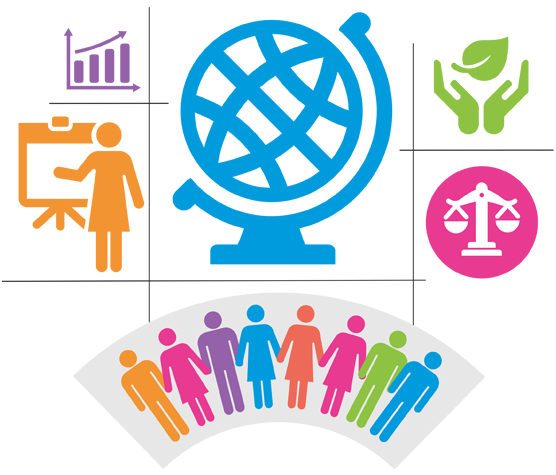Gender mainstreaming was endorsed as a strategy in 1995 at the Fourth World Conference on Women in Beijing. The UN definition of gender mainstreaming [ECOSOC (1997/2)] is quite explicit and has guided work in this area
The 1997 agreed conclusions of ECOSOC defined gender mainstreaming as: "The process of assessing the implications for women and men of any planned action, including legislation, policies or programmes, in all areas and at all levels. It is a strategy for making women’s as well as men’s concerns and experiences an integral part of the design, implementation, monitoring and evaluation of policies and programmes in political, economic and societal spheres so that women and men benefit equally and inequality is not perpetuated. The ultimate goal is achieving gender equality."
Resources
UN Women supports knowledge generation, management and sharing on integrating gender considerations into strategic system-wide processes for use by the UN system, including UN Country Teams (UNCTs).
2022
Handbook on Gender Mainstreaming for Gender Equality Results
The new Handbook on Gender Mainstreaming for Gender Equality Results prepared under the leadership of the UN System Coordination Division seeks to promote and propel systematic and effective gender mainstreaming throughout the United Nations system and within all sectors.
In line with our new Strategic Plan, the Handbook contributes to UN Women’s thought leadership and capacity building on gender mainstreaming that will benefit the UN system and Member States. Notably, the Handbook comes at an opportune time when ECOSOC marks the 25th anniversary of the adoption its Agreed Conclusions on gender mainstreaming this year, and systematic gender mainstreaming is increasingly recognized as critical to accelerating progress on gender equality, including in the context of the 2030 Agenda for Sustainable Development, and Our Common Agenda where the emphasis is on a new social contract that is inclusive of women and girls.
Specifically, the Handbook identifies the key concepts, principles and approaches underlying the gender mainstreaming strategy. It outlines opportunities to apply gender analyses across different contexts and manage for gender equality results. It also shows how to identify opportunities for organizational change, enhance financing for gender equality, and strengthen monitoring and evaluation for the oversight of the results of gender mainstreaming.
While the Handbook is focused specifically on the more traditional areas of development policy and practice, the discussions, findings, and recommendations are equally applicable in the context of humanitarian responses and programmes in conflict and peace-building contexts.
2022
Mainstreaming a gender perspective into all policies and programmes in the United Nations system: Report of the Secretary-General (E/2022/62)
The report assesses progress in mainstreaming gender perspectives in the operational activities of the United Nations development system, and in the achievement of performance requirements set forward by accountability frameworks for gender mainstreaming of the United Nations system at the global and country levels.
2020
Gender Mainstreaming: A global strategy for achieving gender equality and the empowerment of women and girls (brief)
This brochure highlights approaches and strategies for gender mainstreaming. The brochure also features infographics and a list of relevant resources.
2030 Agenda and Gender Equality Training Course
This training course aims to develop and strengthen awareness of gender equality and women's empowerment issues within the context of the 2030 Agenda for Sustainable Development.
2022
Gender analysis in non-traditional sectors: Climate and disaster risk finance and insurance
This publication is part of a capacity-building initiative aimed at enhancing the capacity of sector specialists and gender focal points to produce and utilize gender analysis in their work. The focus of this guide is Climate and Disaster Risk Finance and Insurance (CDRFI), a thematic area where gender analysis has been less widely implemented than in some other sectors. The guidance provides practical tips, steps, and checklists to conduct a gender analysis and examples of good practices. It is relevant for a variety of international development interventions, supporting CDRFI use for and with partner governments in programmes such as a National Adaptation Plan advisory, national disaster risk management and disaster risk financing strategies, and in areas such as financial inclusion, insurance, and agriculture, among others.
